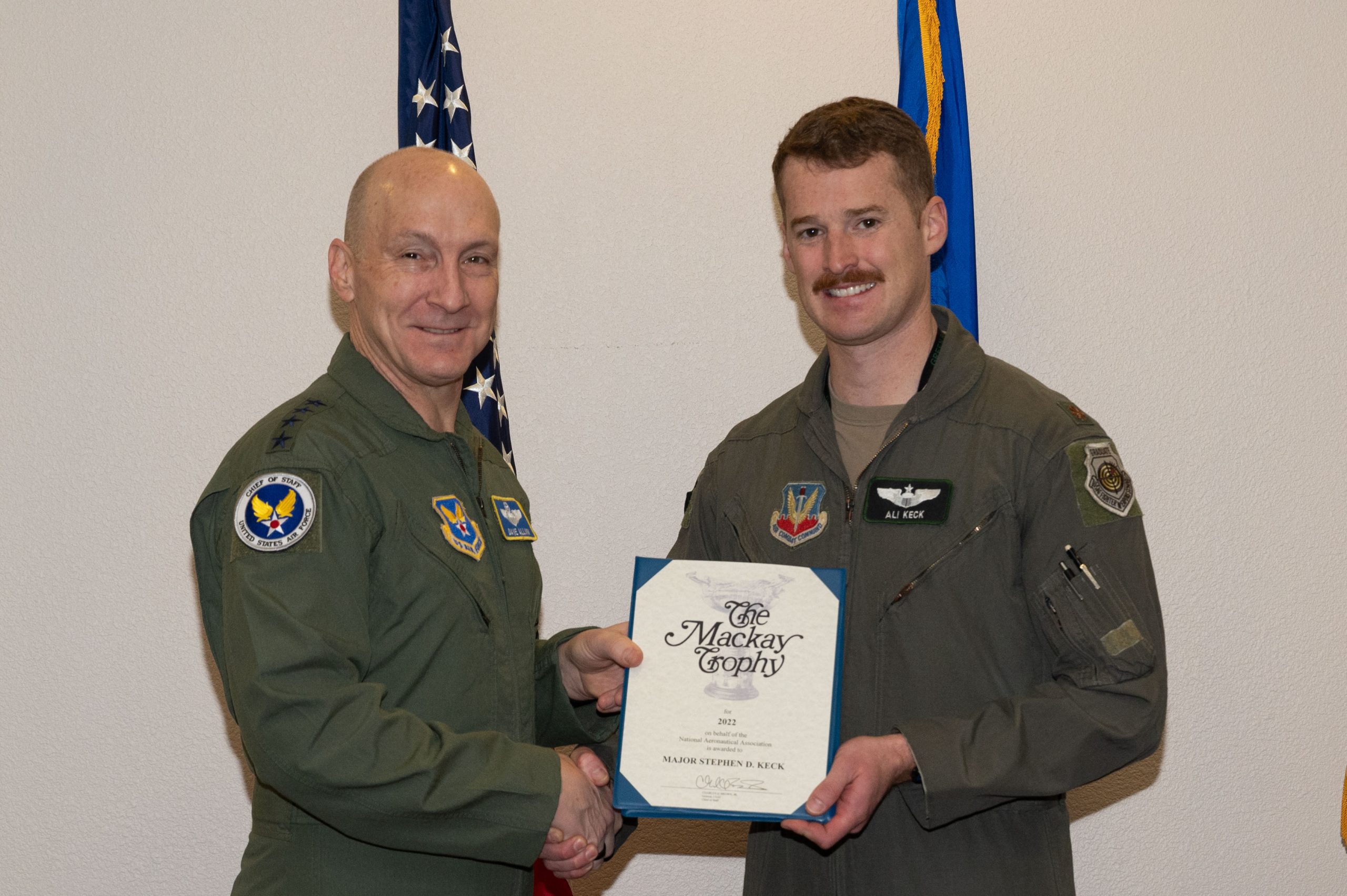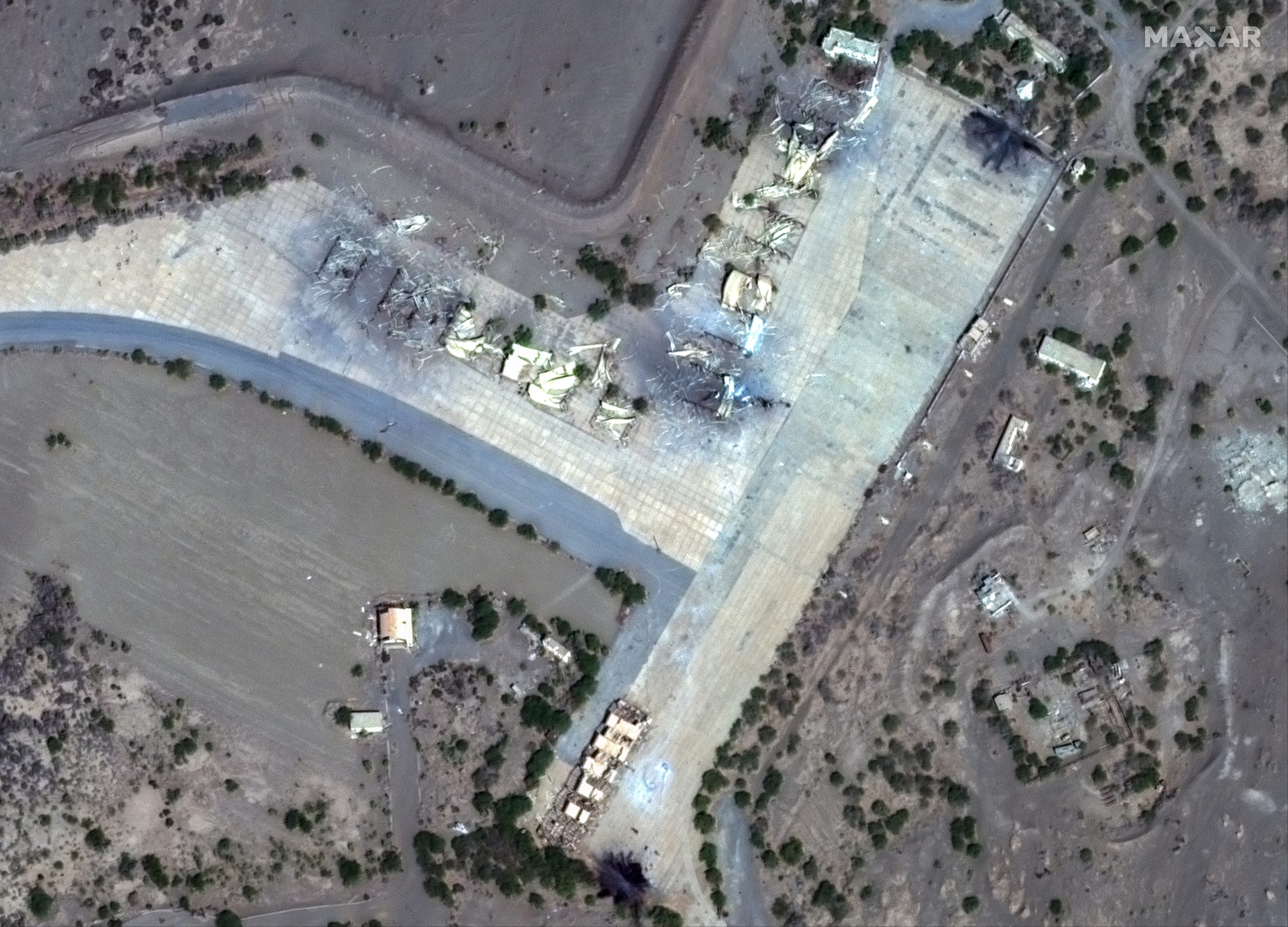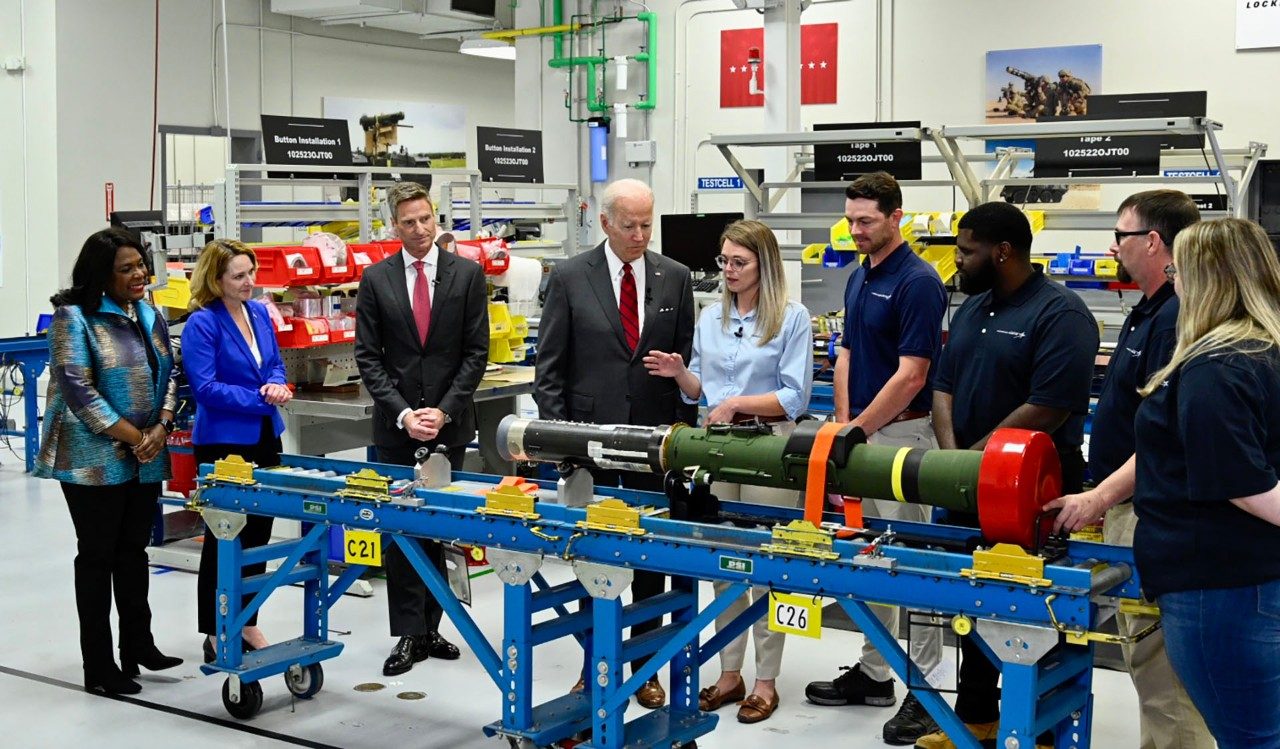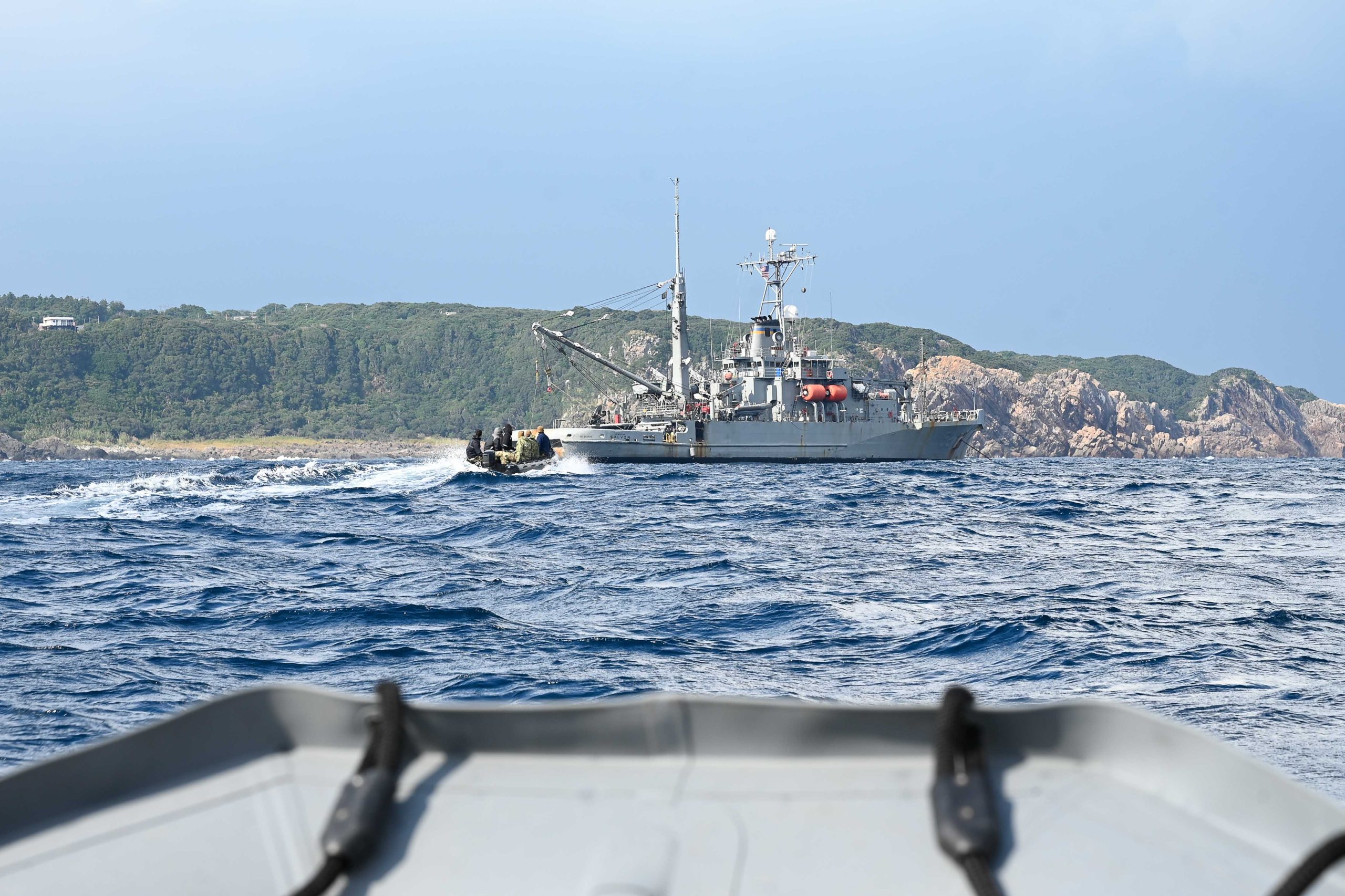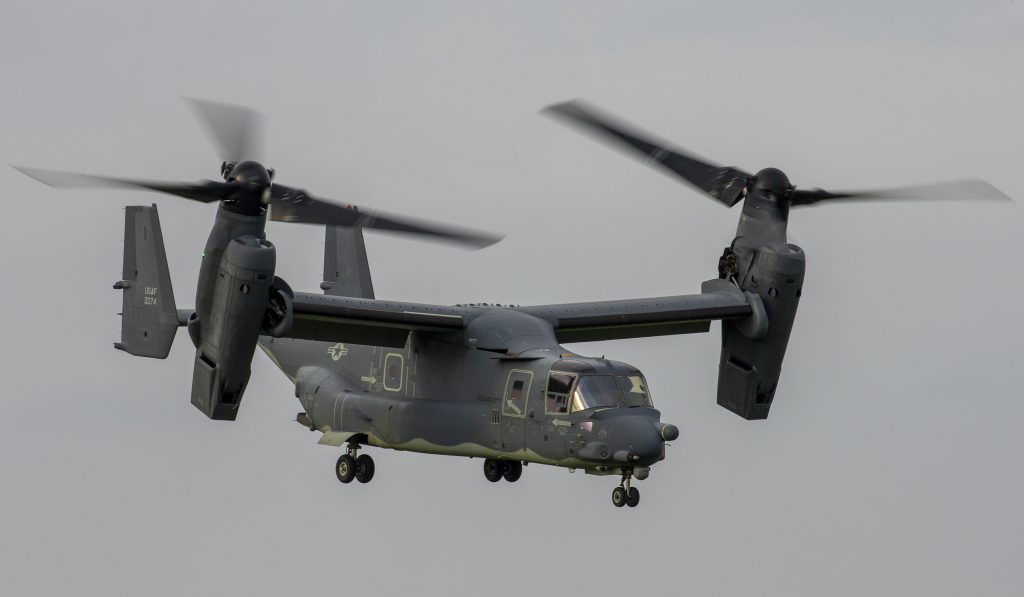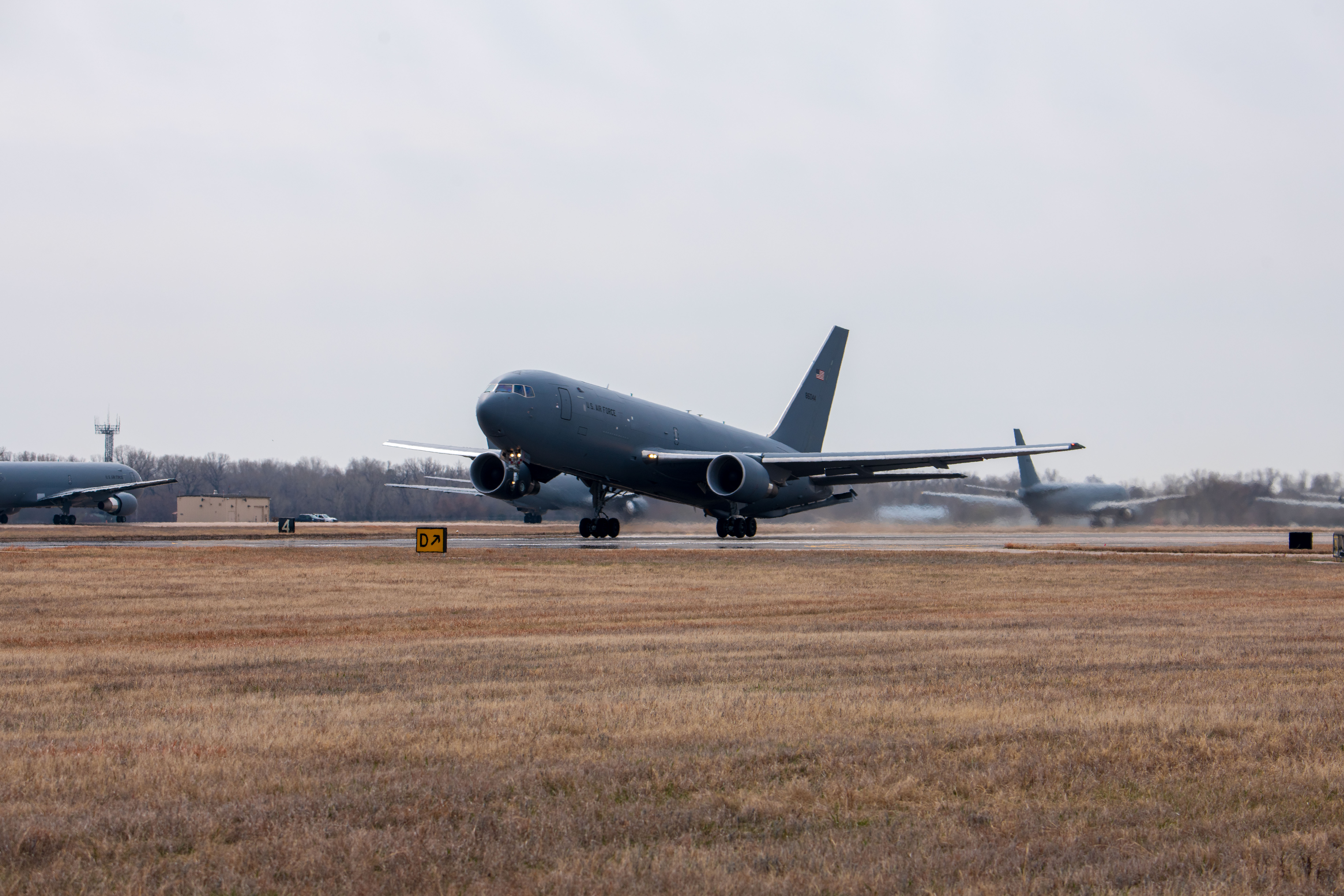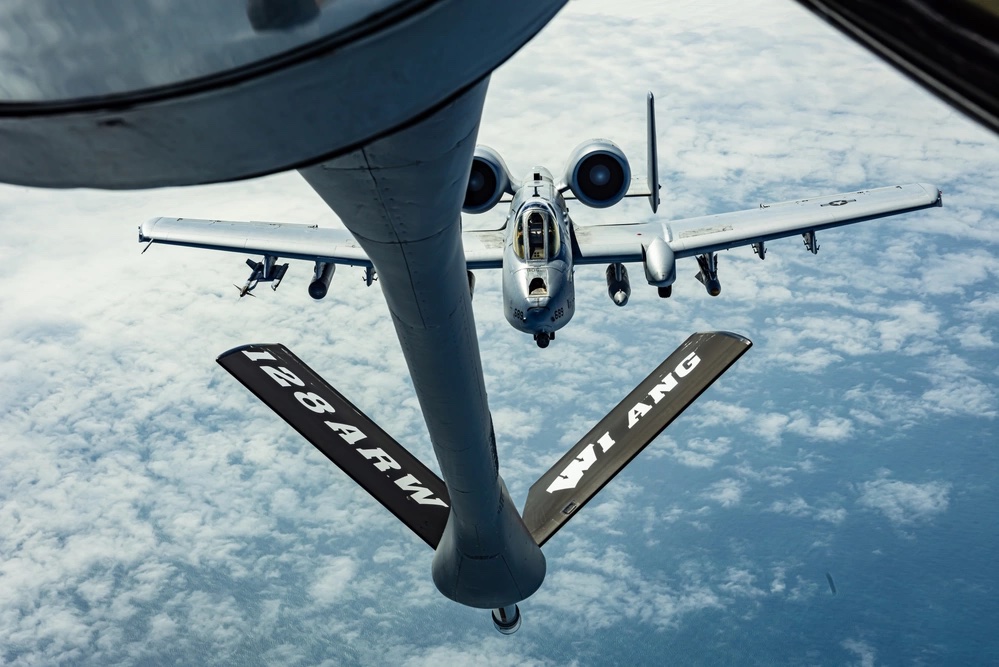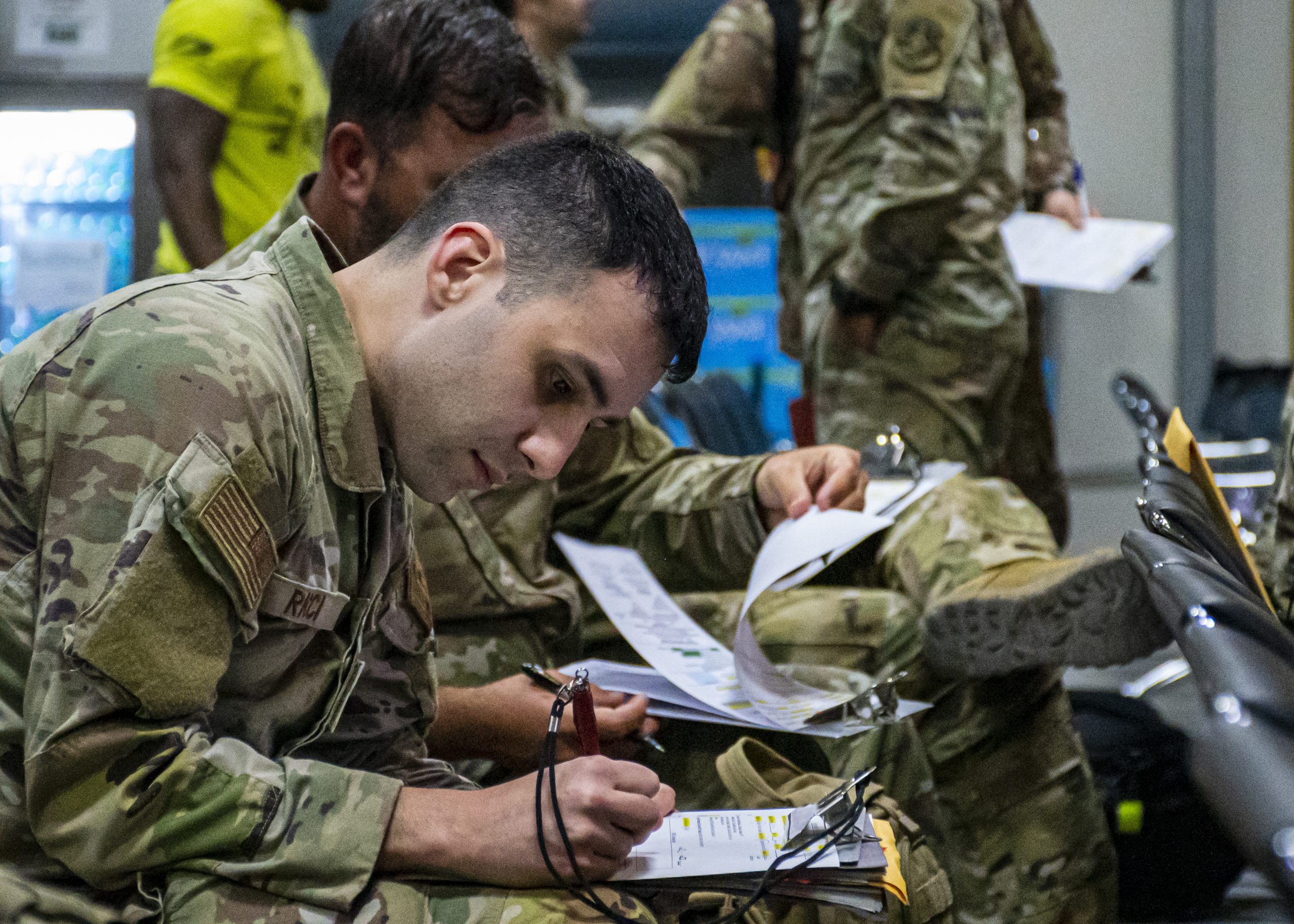An F-15E Strike Eagle pilot was honored last week with the 2022 Mackay Trophy, awarded by the Air Force and the National Aeronautic Association for that year’s most meritorious flight.
Air Force Chief of Staff Gen. David W. Allvin presented the award to Maj. Stephen Keck on Jan. 11 at Nellis Air Force Base, where Keck now serves in the 422nd Test and Evaluation Squadron. Keck was the Defensive Counter-Air Team Lead in 2022, with the 335th Expeditionary Fighter Squadron, when he and his weapon system officer, Lt. Col. John Rabun, “identified a critical error during ingress that would have given away” a special operations team’s position.
“In response, Keck and Rabun corrected the error by being proactive and shifting to a more aggressive posture of their forces,” according to a press release. “During the mission, Keck also identified an adversary aircraft in the contested airspace and initiated an intercept to ensure the safety of ground forces. Ultimately, the success of the operation resulted in the capture of a senior terrorist leader.”
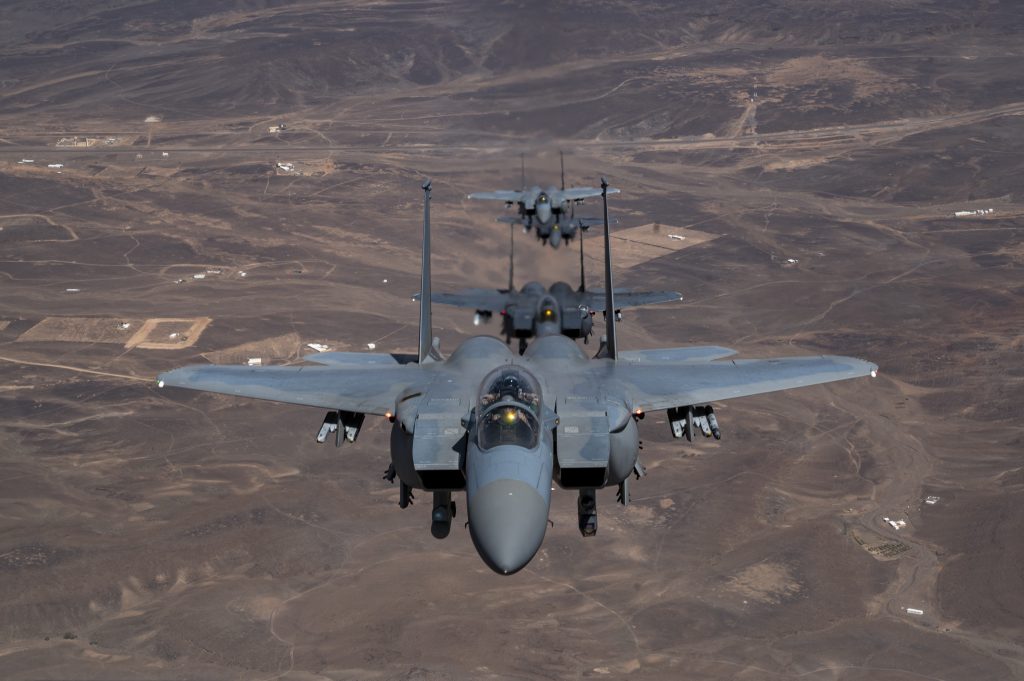
“When we flew that night, we had a very well developed and understood game plan that enabled our ability to operate at our best,” Keck said in the release. “Flying alongside other folks at the top of their game ready to use their capabilities to fight our enemies and protect our allies was an awesome feeling.”
Much of the Air Force’s combat operations in the U.S. Central Command area of responsibility have been in support of the anti-ISIS mission in Syria and Iraq.
The Mackay Trophy was first awarded in 1912 and has gone to such Air Force legends as Gen. Henry H. Arnold, Medal of Honor winner Capt. Eddie Rickenbacker, Brig. Gen. Chuck Yeager, and Vietnam aces Col. Charles B. DeBellevue, Lt. Col. Jeffrey S. Feinstein, and Brig. Gen. R. Stephen Ritchie.
“Maj. Keck’s inspiring actions reflect exactly what it takes to be a stellar Airman and aviator—ingenuity, tenacity, and audacity,” Allvin said.
In 2021, the trophy went to a pair of AC-130J Ghostrider crews who aided in the evacuation of American diplomats from Kabul, Afghanistan, and accomplished the longest unaugmented flight in AC-130J history. This was the eighth consecutive Mackay Trophy awarded to Airmen for actions in the CENTCOM AOR.

